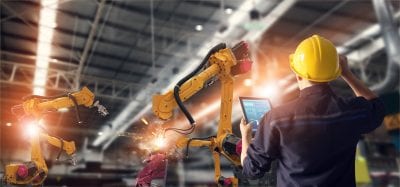Logistics technology is increasingly valuable. Warehouses, trailers, and operators use technology to improve productivity, efficiency, and service.
According to a WSJ Logistics Report, more than half of supply chain managers surveyed by Deloitte and MHI expect robotics and automation to have a significant impact on their business. Autonomous technologies are changing supply chain processes – influencing businesses to work faster, at a lower cost.
Companies are willing to make investments on new technologies in order to exceed customer service expectations, promote efficiency, improve consistency, reduce operating costs and decrease human error. Companies are looking for functional applications that will drive business value. For this reason, today’s intelligent robotics technology is gaining popularity.
About 35% of respondents claim to have already adopted robotics into their supply chains, and that number is set to grow to 74% in the next decade.
After all, robotics in the supply chain is nothing new; advanced intelligence introduces supply chains to machines that are smart, cooperative and productive. The robotics revolution started in the 1960s when the first robots were installed to help General Motors increase its production volume. Today, automakers depend on robotics and automation as a business method that increases volume, improves quality and reduce costs.
“The automotive industry did not buy robots to replace people, they did it to get consistent quality and grow the business,” said Henrik Christensen, PhD at College of Computing at GA Institute for Technology.
Amazon is a prime example of a company that supports robotics. It has 30,000 robots in its warehouses. The robot picks items from shelves and hands it off to a person. Because of these robots, orders are filled 2-3x faster than traditional methods. Robots are able to forecast what products are most used and place them closer to a picker, speeding up the entire process.
Structured
Robotics are used to increase the efficiency of day-to-day tasks like palletizing, loading/unloading, picking and packaging. Robots follow a programmed path at the same speed without deviation, for as long as needed, without intelligence.
Advanced
Robots are slowly obtaining senses. Vision systems enable them to locate specific shapes and objects. Single cameras regulate location, while laser triangulation and stereo systems add depth perception. Robotic systems can track parts on a moving conveyor, orienting the robot’s grippers to pick each one for packing or assembly.
Connected Intelligence: Future
The desire for robotics is strong. According to the International Federation of Robots, future industrial robot installations worldwide could be nearly 300,000 by the end of the decade – a figure nearly doubles the current number. 51% said robotics and automation are a source of disruption or competitive advantage (up from 39% last year).
The future of robotics continues to grow and improve supply chains. Although robotics has been around for a long time, their functionality and ability to collaborate will advance. Robots aren’t here to take away jobs and intimidate people, they’re here to streamline processes and eliminate mundane work.
What to Read Next:
Request Free Logistics Opportunity Assessment

